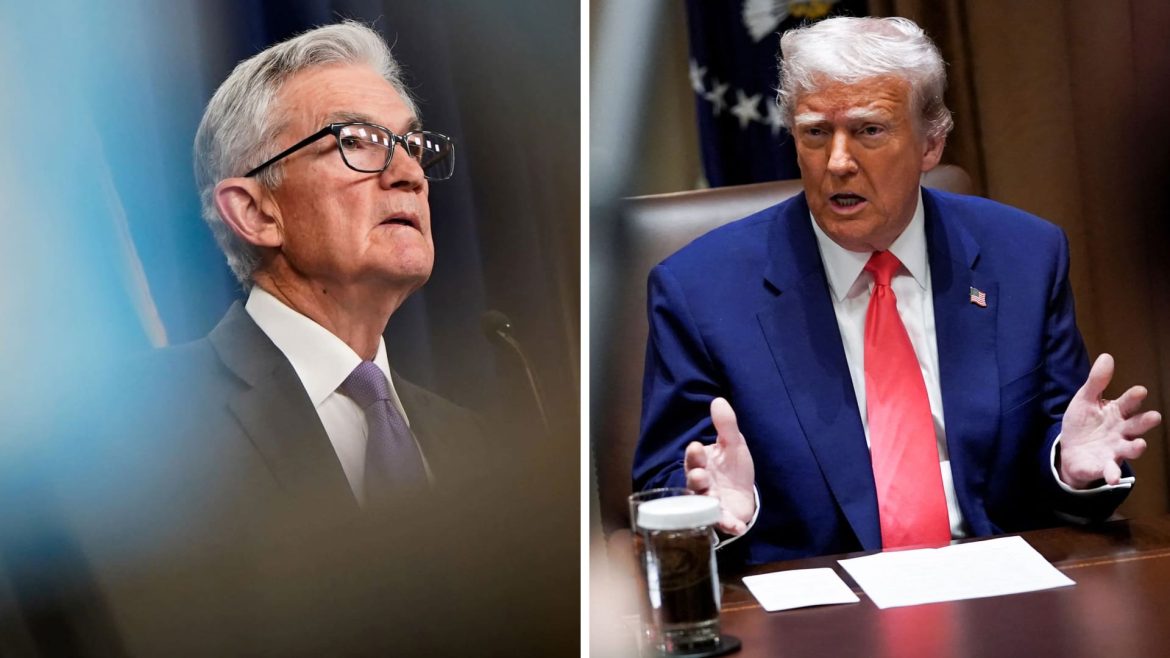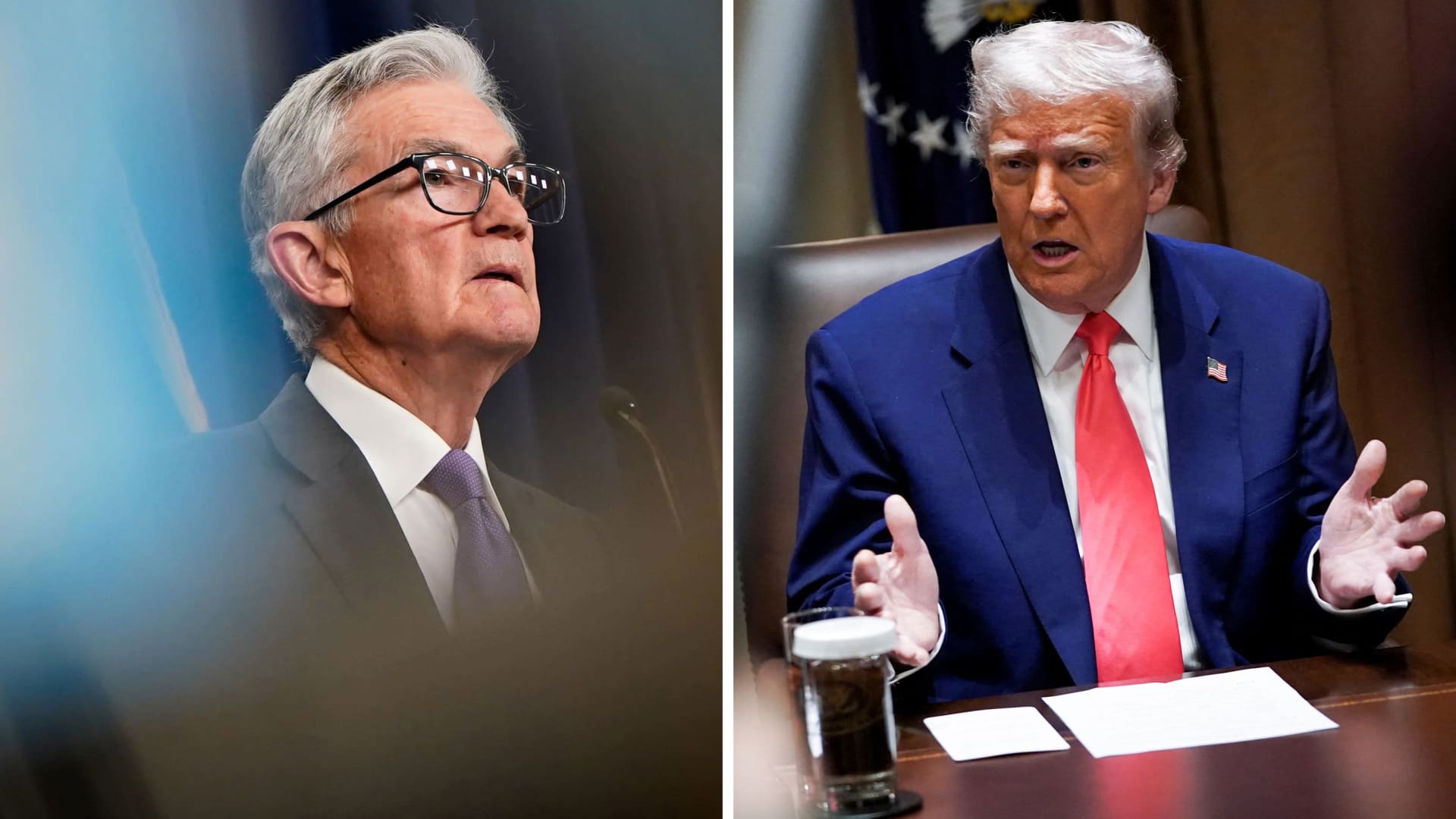The Trump-Powell Conflict: A Clash of Economic Visions and Institutional Independence
Introduction: A Battle of Economic Philosophies
The relationship between a U.S. president and the Federal Reserve Chair has always been a delicate balance. The Federal Reserve, designed to operate independently from political influence, plays a crucial role in maintaining economic stability. However, the dynamic between President Donald Trump and Federal Reserve Chair Jerome Powell was far from harmonious. Their conflict, marked by public clashes and unprecedented challenges to the Fed’s autonomy, revealed deep-seated differences in economic philosophy and the limits of presidential power. This conflict was not just a personal disagreement but a fundamental clash between short-term political goals and long-term economic stability.
The Roots of the Conflict: Interest Rates and Economic Growth
The primary source of tension between Trump and Powell was the issue of interest rates. Trump, a businessman turned politician, believed that low interest rates were essential for economic growth. He argued that the Fed’s rate hikes, initiated under Powell’s leadership, were stifling economic expansion and making the U.S. less competitive globally. This perspective clashed with the Fed’s traditional approach of gradually raising rates to prevent inflation and maintain economic stability.
Trump’s public criticism of the Fed was unprecedented. Previous presidents had refrained from directly commenting on monetary policy to avoid undermining the Fed’s independence. However, Trump saw Powell’s actions as a personal affront and a threat to his economic agenda. He used social media and public rallies to express his dissatisfaction, even questioning Powell’s competence. This break from tradition raised concerns about the politicization of monetary policy and the potential destabilization of financial markets.
Escalating Tensions: Threats and Intimidation
As the Fed continued to raise interest rates, Trump’s rhetoric intensified. He reportedly explored the possibility of firing Powell, a move that would have been unprecedented and potentially damaging to the Fed’s credibility. While the legal authority to dismiss a Fed Chair “for cause” is debated, the mere consideration of such action sent shockwaves through the financial world. The threat of removal created a climate of uncertainty and undermined Powell’s authority, making it increasingly difficult for the Fed to pursue its policy objectives effectively.
Beyond direct threats, the Trump administration employed other tactics to pressure the Fed. These included public statements questioning the Fed’s judgment, highlighting disagreements within the Federal Open Market Committee (FOMC), and scrutinizing the Fed’s internal operations, such as a renovation project at its headquarters. These actions were seen as attempts to undermine Powell’s credibility and create a narrative of incompetence and mismanagement.
The Renovation Controversy: A Distraction or a Legitimate Concern?
The focus on the Federal Reserve building’s renovation project was a curious aspect of Trump’s attacks on Powell. The administration highlighted the project’s cost and alleged mismanagement, framing it as evidence of Powell’s incompetence and lack of fiscal responsibility. While concerns about government spending are legitimate, the renovation issue appeared to be more of a pretext to further undermine Powell’s credibility rather than a genuine concern about budgetary oversight.
This tactic was seen by many as an attempt to find a tangible, relatable issue that would resonate with the public and bolster the case for Powell’s removal. By focusing on a seemingly mundane matter like building renovations, the Trump administration sought to paint a picture of a Fed Chair who was out of touch with the concerns of ordinary Americans and more focused on lavish spending than on promoting economic prosperity.
The Fed’s Response: Preserving Independence Amidst Pressure
Despite the relentless pressure from the Trump administration, Jerome Powell and the Federal Reserve largely maintained their independence. While the Fed did eventually reverse course and begin lowering interest rates, this decision was primarily driven by concerns about slowing global growth and rising trade tensions rather than direct pressure from the White House. Powell repeatedly emphasized that the Fed’s decisions were based on economic data and its dual mandate of price stability and full employment, not on political considerations.
The Fed’s ability to withstand the political pressure during this period was a testament to its institutional strength and the importance of its independence. Had the Fed succumbed to political pressure and prematurely lowered interest rates, it could have fueled inflation and ultimately undermined long-term economic stability. By staying true to its principles and focusing on its mandate, the Fed preserved its credibility and demonstrated the value of an independent central bank.
The Broader Implications: Presidential Power and Economic Policy
The conflict between Trump and Powell raised fundamental questions about the balance of power between the executive branch and the Federal Reserve. It highlighted the potential for a president to exert undue influence over monetary policy, even without directly controlling the Fed’s decisions. The episode served as a reminder of the importance of safeguarding the Fed’s independence and ensuring that monetary policy decisions are based on sound economic principles rather than political expediency.
Moreover, the clash underscored the potential risks of a president pursuing unconventional economic policies. Trump’s focus on short-term economic gains, often at the expense of long-term stability, contrasted sharply with the Fed’s more cautious and data-driven approach. The experience highlighted the need for a more balanced and sustainable approach to economic policy, one that takes into account both the immediate needs of the economy and the long-term risks to financial stability.
Conclusion: A Lesson in Institutional Resilience
The tumultuous relationship between President Trump and Fed Chair Powell represented a stress test for the U.S. financial system. It challenged the Fed’s independence, raised questions about presidential power, and highlighted the potential risks of politically motivated monetary policy. While the Fed ultimately weathered the storm, the episode served as a stark reminder of the importance of preserving the central bank’s autonomy and ensuring that economic policy is guided by sound principles rather than political considerations.
The legacy of this conflict will likely shape the relationship between future presidents and Fed Chairs for years to come. It underscores the need for mutual respect, open communication, and a shared commitment to economic stability. The Trump-Powell conflict was not just a battle of personalities but a fundamental clash between short-term political goals and long-term economic stability. The lessons learned from this episode will be crucial in navigating future challenges to the Fed’s independence and the broader economic landscape.





